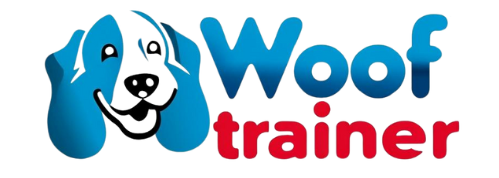You want what’s best for your dog: comfort, health, longevity. Choosing between a standard bowl and an elevated stainless steel dog bowl can seem trivial—but for large breeds, older dogs, or brachycephalic (flat-faced) dogs, the decision really matters.
Why Bowl Style Matters for Your Dog’s Health & Comfort
Many popular guides (e.g. AKC’s “Choosing the Right Dog Bowl”) highlight that stainless steel is excellent for durability, hygiene, and ease of cleaning. But even with a hygienic material, how high the bowl sits affects posture, digestion, joint strain, and risk factors.
Some breeders and dog health experts caution that elevated feeders might increase risk of bloat (gastric dilatation-volvulus, GDV) in large breeds. That said, the evidence is mixed. What matters more is how elevated the feeder is relative to your dog’s chest height, and whether the elevated model is well designed.
In contrast, many blog-level and review sources for brachycephalic breeds (e.g. “Why Regular Dog Bowls Won’t Cut It for Brachycephalic Dogs”) argue that elevating and tilting the bowl reduces strain and breathing difficulty by allowing the face and neck to rest in a more natural position.
To make your decision, let’s compare advantages, drawbacks, and how to choose correctly in your particular case.
Pros & Cons: Elevated Stainless Steel Dog Bowl vs Standard Bowl
| Feature | Elevated Stainless Steel Bowl | Standard (Floor-Level) Stainless Steel Bowl |
|---|---|---|
| Neck & Spine Comfort | Reduces bending for large & senior dogs; beneficial for arthritic joints. | Dogs must bend lower, which may strain neck/back over time in large or aging dogs. |
| Posture & Digestion | Can help maintain more vertical throat alignment in brachycephalic dogs, reducing regurgitation and gas. | May worsen posture for flat-faced breeds, pressing muzzle to bowl walls. |
| Risk of Bloat (GDV) | Some studies suggest elevated bowls may increase GDV risks for large/giant breeds. | Traditional floor-level feeding is considered safer by some vets in relation to GDV risk. |
| Mess & Stability | Often more stable on stands, less slippage; easier to clean under. | Floors may get wet / kibble scatters; bowls may shift or slide. |
| Ease of Use for Dog | Easier for dogs with mobility issues or neck pain to reach. | Simpler, no stand to worry about; less complex structure. |
| Cost & Complexity | More expensive, may need adjustable height, more parts to clean. | Simpler, lower cost, fewer parts. |
Who Benefits Most from Elevated Stainless Steel Bowls?
1. Large & Giant Breeds
Their necks already travel a long distance when bending down. An elevated bowl at near-chest height reduces that travel, easing strain on joints and vertebrae. Many “raised dog bowl” reviews recommend heights of 30–50 cm for larger breeds.
2. Senior Dogs / Dogs with Arthritis or Mobility Issues
Stiff joints, back pain, or difficulty lowering their head make standard bowls painful. Elevation supports comfort. In “Dog Bowls: 5 Essential Types,” one case mentions a senior German Shepherd whose arthritis improved noticeably after switching to elevated feeders.
3. Brachycephalic (Flat-Faced) Breeds
These dogs struggle with breathing, muzzle shape, and neck alignment. As “Why Regular Dog Bowls Won’t Cut It for Brachycephalic Dogs” states, bowls closer to their face—with possibly a tilt—allow better airflow, less neck strain, and more comfortable swallowing.
In sum: if your dog is large, older, or flat-faced, an elevated stainless steel dog bowl is likely to reduce strain and improve feeding comfort—provided you pick the right height and design.
How to Choose the Right Elevated Stainless Steel Dog Bowl (Design & Height Tips)
Height & Positioning Guidelines
- Aim for the bowl rim to be at or just below the dog’s breast bone (sternum)—not too high, not too low.
- Avoid raising the bowl above chest level, especially for giant breeds, as that might increase GDV risk. Some warnings note that feeders taller than about one foot (30 cm) may raise risk for large breeds. (Reddit)
- Use stands that are adjustable if your dog is still growing or you care for multiple dogs of different sizes.
Bowl Design Features
- Use food-grade 304 or 18/8 stainless steel for safety and durability.
- Removable bowls: so you can take the steel bowl out from the elevated stand and clean it in a dishwasher.
- Non-slip rubber feet or base to prevent sliding or tipping.
- Optional tilt or angled front lip for brachycephalic breeds (so they don’t shove their nose against the bowl wall).
- Secure insert seats so bowl doesn’t shift or rattle in the stand.
- Easy-to-clean structure: minimal crevices, smooth joints.
Feeding Behavior & Health Considerations
- Monitor eating speed. Some dogs slow down when bowls are raised.
- Watch for signs of bloating, regurgitation, or discomfort. If elevated feeding might be risky for your breed (e.g. great danes, mastiffs), consult your vet.
- Clean bowl daily, sanitize, and inspect for wear or rust.
When a Standard Bowl Is Preferable
- For very large breeds with known GDV risk, some vets advise avoiding high feeders, or at least not raising too high. (AKC)
- In multi-dog homes where you don’t want multiple stands or complex setups.
- If your dog has no mobility issues, is still young, and adapts well to floor-level feeding.
Putting It All Together: Which Bowl Should You Choose?
- Assess your dog’s size, age, breed shape, and any joint or respiratory issues.
- Watch for existing signs of discomfort when eating from a low bowl (neck stretching, coughing, pushing bowl).
- Try a moderate elevated bowl (just below sternum) and observe: is the dog more comfortable? Does digestion improve? Any bloating or upset?
- Speak with your vet, especially if your dog belongs to a high-risk breed for GDV or has existing conditions.
- Review in-depth guides before purchase: for example, “The Ultimate Guide to Stainless Steel Dog Bowls” goes deep into selecting steel options, and A Buyer’s Guide to the Best Stainless Steel Dog Bowls helps you compare models. Also, if your dog eats too fast, Slow Feeder Stainless Steel Dog Bowls: Do They Really Work? will help you decide whether to pair slow-feeder designs with elevated styles.
By combining these resources with your dog’s unique needs, you’ll find a bowl design that balances comfort, safety, and hygiene.
FAQ
-
Does elevating the bowl always reduce risk of bloat?
Not necessarily. Some studies suggest raised feeders might increase risk of GDV in large or giant breeds when the height is excessive. -
How high should I elevate the bowl for my dog?
Aim for just below or at the level of the dog’s sternum (breastbone). Avoid going above chest height. Adjustable stands are safer for fine-tuning. -
Are stainless steel elevated bowls easy to clean?
Yes—good ones allow you to remove the steel bowl for dishwashing. Choose designs with minimal crevices. -
Will my brachycephalic dog benefit from elevation?
Generally yes. Elevation (especially with tilt) can allow better neck alignment, reduce muzzle blockage, and ease breathing during meals. -
Can older dogs with arthritis eat from standard bowls?
They can, but it may involve more strain. Elevation usually offers a more comfortable feeding posture, reducing joint stress. -
Should I use a slow feeder in combination with an elevated bowl?
You can. Some elevated feeders accept slow feeder stainless steel dog bowls—helping slow eating even while preserving height benefit. -
How do I know if elevation is causing problems (e.g. bloating)?
Monitor for signs such as excessive drooling, restlessness after eating, enlarged abdomen, retching without vomiting—if seen, revert to lower feeding and consult your vet. -
Is one type of stand material better than another (wood, metal, plastic)?
The stand material matters less than stability, ease of cleaning, and durability. Avoid porous wood that can absorb moisture unless sealed well.

